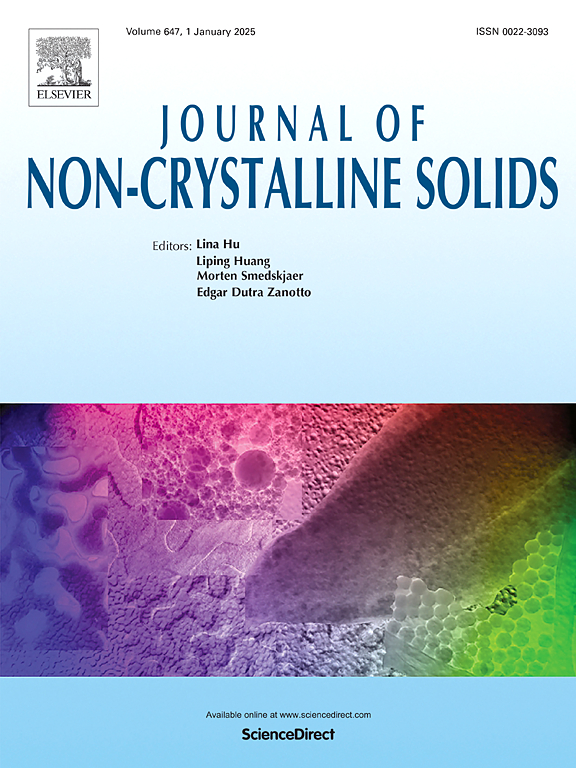Preparation and Properties of Bi2O3-B2O3-ZnO Metal Sealing Glass
IF 3.5
3区 材料科学
Q1 MATERIALS SCIENCE, CERAMICS
引用次数: 0
Abstract
Low-temperature sealing represents a future development trend in the metal-glass sealing industry. This study investigated the effects of different Bi/B ratios and Cu/Zn ratios on the properties of Bi-B-Zn system glasses, and explored their sealing performance with stainless steel (SUS430) for the first time. The results showed that the upper limit of Bi₂O₃ content in the glass is 50%, with a maximum coefficient of thermal expansion (α) of 115×10⁻⁷/°C. Replacing ZnO with CuO can reduce the characteristic temperatures of the glass but increases its crystallization tendency. However, adding a small amount of CuO enhances the sealing strength between the glass and metal, achieving a sealing strength of 3.08 MPa. Additionally, the study found that during sealing at a low temperature of 470°C, ion penetration occurs between the metal and glass, forming a bonding layer with a thickness of approximately 3 μm. This research holds significant importance for advancing low-temperature sealing technology between metal and glass.
Bi2O3-B2O3-ZnO金属密封玻璃的制备及性能研究
低温密封代表了金属玻璃密封行业未来的发展趋势。研究了不同Bi/B比和Cu/Zn比对Bi-B-Zn系玻璃性能的影响,并首次探索了其与不锈钢(SUS430)的密封性能。结果表明,玻璃中Bi₂O₃含量的上限为50%,最大热膨胀系数(α)为115×10⁻⁷/°C。用CuO代替ZnO可以降低玻璃的特征温度,但增加了玻璃的结晶倾向。然而,加入少量的CuO提高了玻璃与金属之间的密封强度,达到3.08 MPa的密封强度。此外,研究发现,在470℃低温密封过程中,金属和玻璃之间发生离子渗透,形成厚度约为3 μm的键合层。该研究对推进金属与玻璃间低温密封技术具有重要意义。
本文章由计算机程序翻译,如有差异,请以英文原文为准。
求助全文
约1分钟内获得全文
求助全文
来源期刊

Journal of Non-crystalline Solids
工程技术-材料科学:硅酸盐
CiteScore
6.50
自引率
11.40%
发文量
576
审稿时长
35 days
期刊介绍:
The Journal of Non-Crystalline Solids publishes review articles, research papers, and Letters to the Editor on amorphous and glassy materials, including inorganic, organic, polymeric, hybrid and metallic systems. Papers on partially glassy materials, such as glass-ceramics and glass-matrix composites, and papers involving the liquid state are also included in so far as the properties of the liquid are relevant for the formation of the solid.
In all cases the papers must demonstrate both novelty and importance to the field, by way of significant advances in understanding or application of non-crystalline solids; in the case of Letters, a compelling case must also be made for expedited handling.
 求助内容:
求助内容: 应助结果提醒方式:
应助结果提醒方式:


